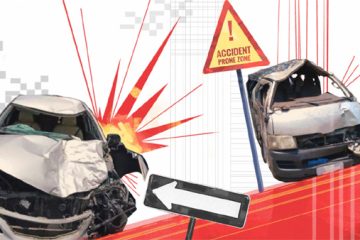Paradise island turned into hell with Friday shootout killing 85; Oslo blast claims 7
Norwegian police searched for more victims yesterday after a suspected right-wing zealot killed at least 92 people in a shooting spree and bomb attack that have traumatized a once-placid country.
As harrowing testimony emerged from the summer camp where scores of youngsters were mown down, Norway was struggling to understand how a country famed as a beacon of peace could experience such bloodshed on its soil.
“Never since the Second World War has our country been hit by a crime on this scale,” Prime Minister Jens Stoltenberg told journalists as police searched for more bodies on the idyllic Utoeya island.
The latest death toll from the island massacre stood at 85 while seven people died in the Oslo bombing, reports AFP.
Police said they were questioning a right-wing Christian on Saturday over the massacre that Norway’s prime minister said had turned an island paradise into hell on earth.
While there was no official confirmation of the suspect’s identity, he was widely named by the local media as Anders Behring Breivik.
The attacks on Friday afternoon were western Europe’s deadliest since the 2004 Madrid bombings, carried out by al-Qaeda.
While there had been initial fears they might have been an act of revenge over Norway’s participation in the campaigns in Afghanistan and Libya, the focus shifted when it emerged the suspect was a native Norwegian.
Seven of the victims were killed in a massive explosion which ripped through government buildings, including Stoltenberg’s office and the finance ministry, in downtown Oslo.
It is thought that the bomber then caught a ferry to nearby Utoeya wearing a police sweater.
On arrival, he claimed to be investigating the bomb attack and began opening fire with an automatic weapon.
Stoltenberg, as he visited some of the survivors, spoke of his own anguish at the massacre on an island to which he was a frequent visitor. He had been due to give a speech on Saturday to the camp, organised by his Labour party.
“Many of those who have died were friends. I know their parents and it happened at a place where I spent a long time as a young person… It was a paradise of my youth that has now been turned into hell,” he said.
The prime minister said he had been deeply moved by speaking to youngsters who had told him how they swam to shore under a hail of gunfire, in some cases helping friends who had been shot.
Norwegian police said they feared there could also be explosives on the island.
There was widespread international condemnation with US President Barack Obama saying the attacks were “a reminder that the entire international community has a stake in preventing this kind of terror from occurring.”
German Chancellor Angela Merkel said: “Everyone who believes in freedom, respect and living together peacefully should fight against this hatred.”
The Norwegian capital is a well-known symbol of international peace efforts and home to the Nobel Peace Prize.
SEARCH FOR SURVIVORS
Police combed the island and the lake, even using a mini-submarine to search the water, police inspector Bjoerne Erik Sem-Jacobsen told Reuters. “We don’t know how many people were on the island, therefore we have to search further.”
They were also checking media reports that some witnesses believed Breivik had an accomplice. “There are no concrete reports of a second gunman, although we’re not excluding any possibilities,” said Oslo police spokeswoman Trine Dyngeland.
The suspect, tall and blond, owned an organic farming company called Breivik Geofarm, which a supply firm said he had used to buy fertilizer — possibly to make the Oslo bomb.
“These are goods that were delivered on May 4,” Oddny Estenstad, a spokeswoman at farm supply chain Felleskjoepet Agri, told Reuters. “It was 6 tonnes of fertilizer, which is a small, normal order for a standard agricultural producer.”
It was not clear if Breivik, a gun club member according to local media, had more than one weapon or whether he had stocked ammunition on Utoeya, where police found explosives.
Initial speculation after the Oslo blast had focused on Islamist militant groups, but it appears that only Breivik — and perhaps unidentified associates — was involved.
Officials pointed to Breivik’s far-right views.
“I think it’s appropriate to underline that politically motivated violence that Norway has seen in the modern age has come from the extreme rightist side,” Foreign Minister Jonas Gahr Stoere said.
Home-grown anti-government militants have struck elsewhere in the past, notably in the United States, where Timothy McVeigh killed 168 people with a truck bomb in Oklahoma City in 1995.
-With The Daily Star input




















